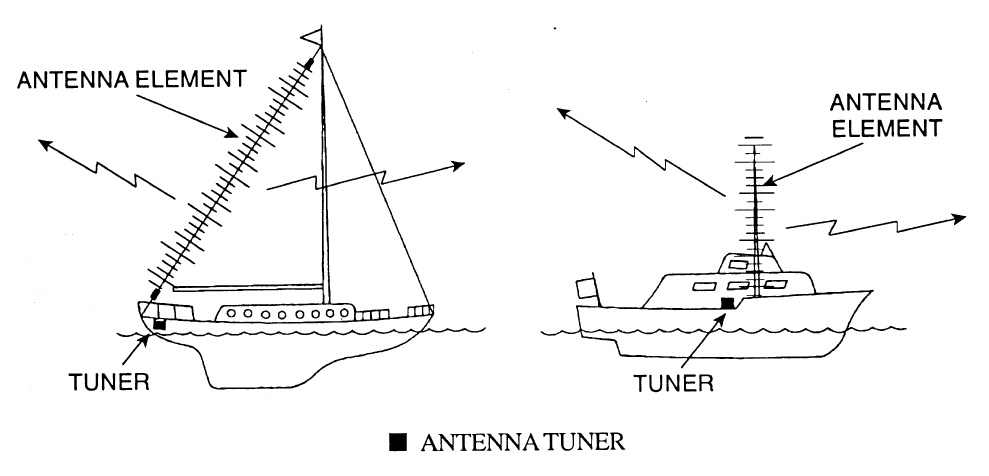Locate your marine SSB in a place that is convenient for operation. The radios are large and heavy. They should be positioned for easy access to all controls. Most of the time your SSB set can nestle right along with your other nav gear.
You can build the equipment into your instrument panel, however, you should provide some ventilation. Many new SSB’s are fan cooled and there needs to be a source of fresh air to facilitate this process. Everything on the inside of the radio is transistorized, and slight amounts of heat are actually good for the equipment—it dries things out.
TIP!
We recommend keeping the equipment down low for easy channel selection. Make it comfortable to operate. Some night in a cozy harbor you may wish to simple flip through the worldwide frequencies to pick up some action. You want the set as accessible to your hand as possible without any undue effort.
ICOM SSBs have a built-in speaker that faces forward. This eliminates having to purchase an external speaker which is required when the built-in speaker is located elsewhere. A good carpenter can build a teak frame that will make the equipment look nice. An anodized aluminum trim kit is also available from your ICOM dealer. A heavy-duty mounting bracket is shipped with each rig to facilitate mounting it from below or hanging from above.
Once you have selected an ideal location for mounting the equipment, read on, because we’ll take a look at power requirements, antennas, and grounding.
Installation Recommendations
Automatic Antenna Tuner Mounting Locations
(1) Aboard sailboats, the automatic antenna tuner normally feeds an insulated section of rigging, such as a backstay or, on a ketch, a mizzen sidestay. The automatic tuner hides away, below, near the chain plate that holds this particular insulated stay. The automatic tuner should go as far away from the radio as possible in order to minimize RF feedback.
TIP!
FCC rules require the active antenna tuner to be located as far away from people as possible. In other words, don’t mount the tuner in an area where someone could actually touch the high voltage output single wire terminal!

(2) The automatic tuner requires no specific orientation. You can hang it vertically or horizontally. You should insure that it will stay relatively dry and the water drain screws (if any) are at the low point of the unit if it is going to get wet.
(3) Remove the downward-facing drain screw to provide an escape path for trapped moisture.
(4) Aboard powerboats, the automatic antenna tuner normally feeds a fiberglass whip. If possible, mount the tuner up in the flying bridge area, well protected from the weather. Mount it as far away from the helm as possible. If there is no flying bridge on the powerboat, the tuner may be mounted near the base of the white fiberglass whip.
(5) The wire feeding your antenna system is high-voltage “GTO-15.” It is available at most marine electronic stores. Although it looks like coaxial cable, it is not. The jacket contains no internal braid. This means the high-voltage single wire is part of your active antenna system, and should be routed far away from other wires aboard. Keep it away from sleeping quarters or areas where crew members might sit. It’s always a good idea to keep everyone at least 5 feet away from the GTO-15, antenna lead wire.
Did You Know?
It is normal to hear your automatic tuner make a clicking sound during tune-up. What you are hearing are the internal relays self-adjusting inductance and capacitance for the best possible match. The clicking will normally stop after about 5 seconds of initial tune-up. The tuner will remain silent during normal communications on marine SSB. The clicking sounds during normal tune-up are a positive indication that your system is performing as it should. However, if the clicking continues for more than 10 seconds, chances are the tuner is missing its ground connection or the antenna connection up on deck.